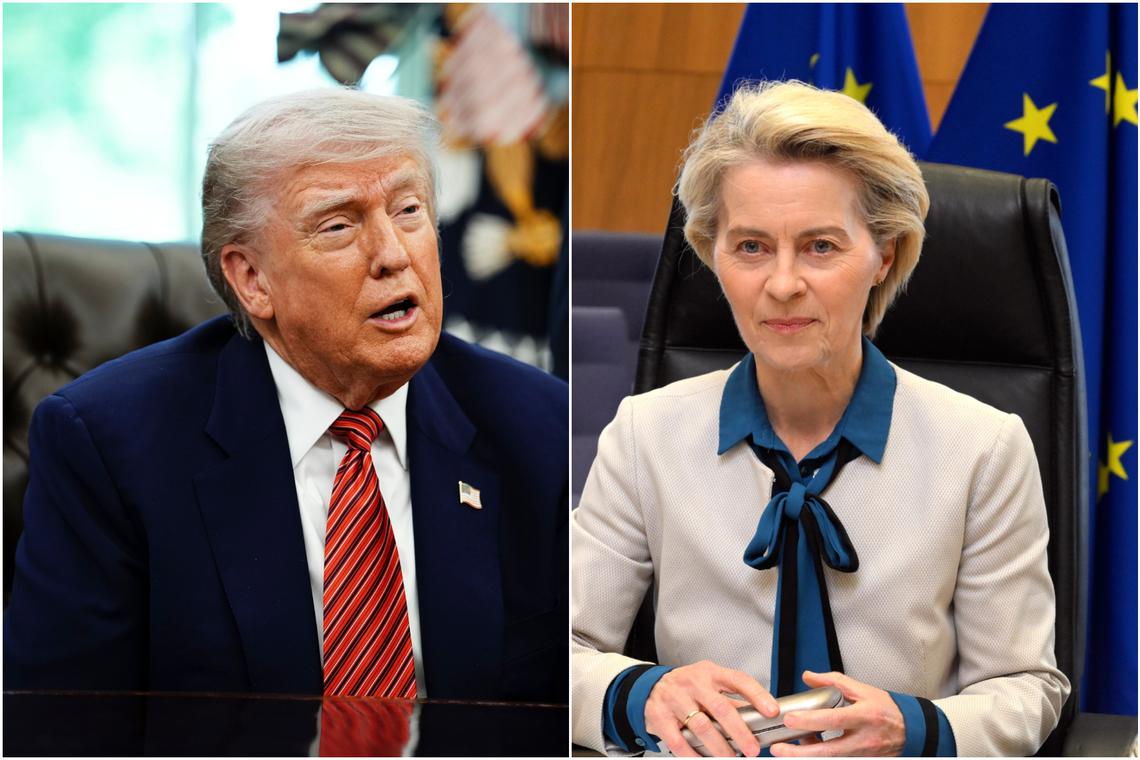EU Extends Suspension, Eyes Negotiation Clock
European Commission President Ursula von der Leyen confirmed on Sunday that the EU will postpone its planned retaliatory tariffs against U.S. exports—initially scheduled for Tuesday—until early August. The penalties, sized at €21 billion, were first suspended in March following initial U.S. tariffs on steel and aluminium. Von der Leyen emphasized this pause allows more time for direct trade discussions ahead of any escalation.
Trump’s 30% Import Tax Threat Looms
A letter from President Trump proposed a 30 percent tariff on EU goods beginning August 1, coupled with a warning to further escalate duties if retaliatory tariffs proceed. In a pre-recorded interview on Fox News broadcast Saturday night, Trump stated that while some nations are “very upset now,” the tariffs are bringing “hundreds of billions of dollars” into the U.S. treasury. The broad language suggests possible expansion to other sectors beyond steel and aluminium.
Strategic Gambit: Negotiation Window or Tactical Delay?
Despite extending the suspension, von der Leyen reaffirmed that the EU remains committed to a negotiated solution, while also ramping up internal preparations should talks falter. “We will continue to prepare for the countermeasures so we’re fully ready,” she said. Brussels views this as a strategic pause, aimed at seeing if diplomatic engagement can avert a trade confrontation.
EU Member States Deliberate Common Position
EU trade ministers will gather in Brussels on Monday to chart the bloc’s next move. Germany’s Finance Minister Lars Klingbeil told the Sueddeutsche Zeitung on Sunday that “serious and solution‑oriented negotiations” remain essential but that failure would require “decisive countermeasures to safeguard jobs and businesses.” France’s President Emmanuel Macron has similarly urged the European Commission to “resolutely defend European interests.”
U.S. Tariff Strategy Broadens Global Reach
To date, the Trump administration has floated tariff options affecting 24 countries, including all EU member states. White House trade advisor Peter Navarro has set an aggressive agenda—“90 deals in 90 days”—and preliminary agreements have been reached with the United Kingdom and Vietnam, though many trade paths remain under negotiation.
Timeline & Escalation Risks Ahead
| Deadline | Anticipated Developments |
|---|---|
| By August 1 | EU decides whether to activate counter‑tariffs |
| Early August | EU ministers meet in Brussels to determine stance |
| Post‑August | Potential activation of duties or new trade stipulations |
Implications for Industries and Consumers
Should the EU enact retaliation, U.S. exporters could face additional tariffs of up to 30%, affecting sectors like machinery, automotive, agricultural goods, and spirits. American businesses warn these duties may raise production costs, fuel inflation, and dampen job growth. Meanwhile, European exporters fear reduced access to U.S. markets, increased compliance burdens, and supply chain disruptions as global trade tensions intensify.
Diplomatic Ripple Effects Ahead
A breakthrough could set the tone for future transatlantic cooperation on wider economic issues, from industrial policy to LNG imports. Conversely, a tariff escalation could prompt similar disputes with other trade partners—China, Canada, and ASEAN nations are already wary of mutual reprisals.
As both Brussels and Washington prepare their next steps, the window for a diplomatic resolution remains narrow. All eyes are on August 1, when the EU’s extended grace period expires and a new chapter in U.S.–EU trade relations unfolds.







